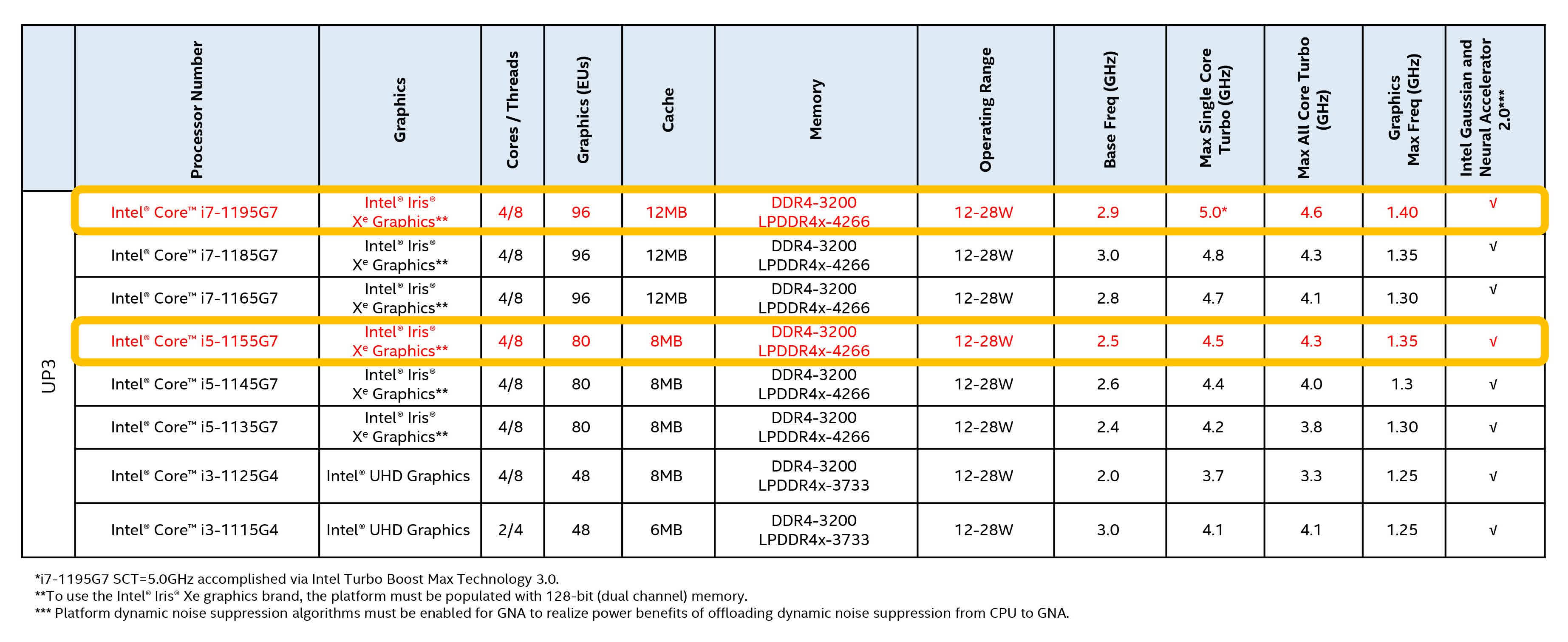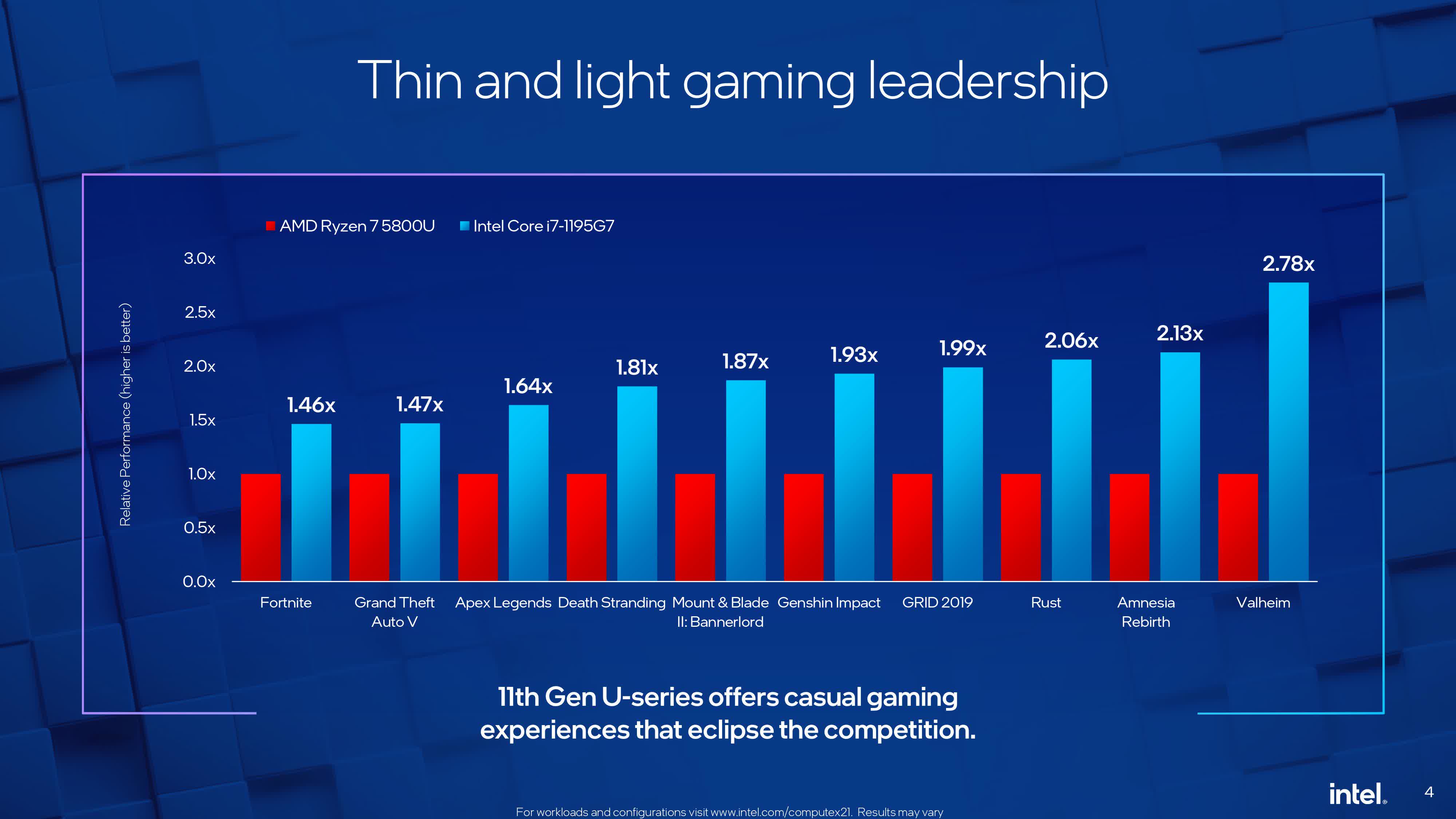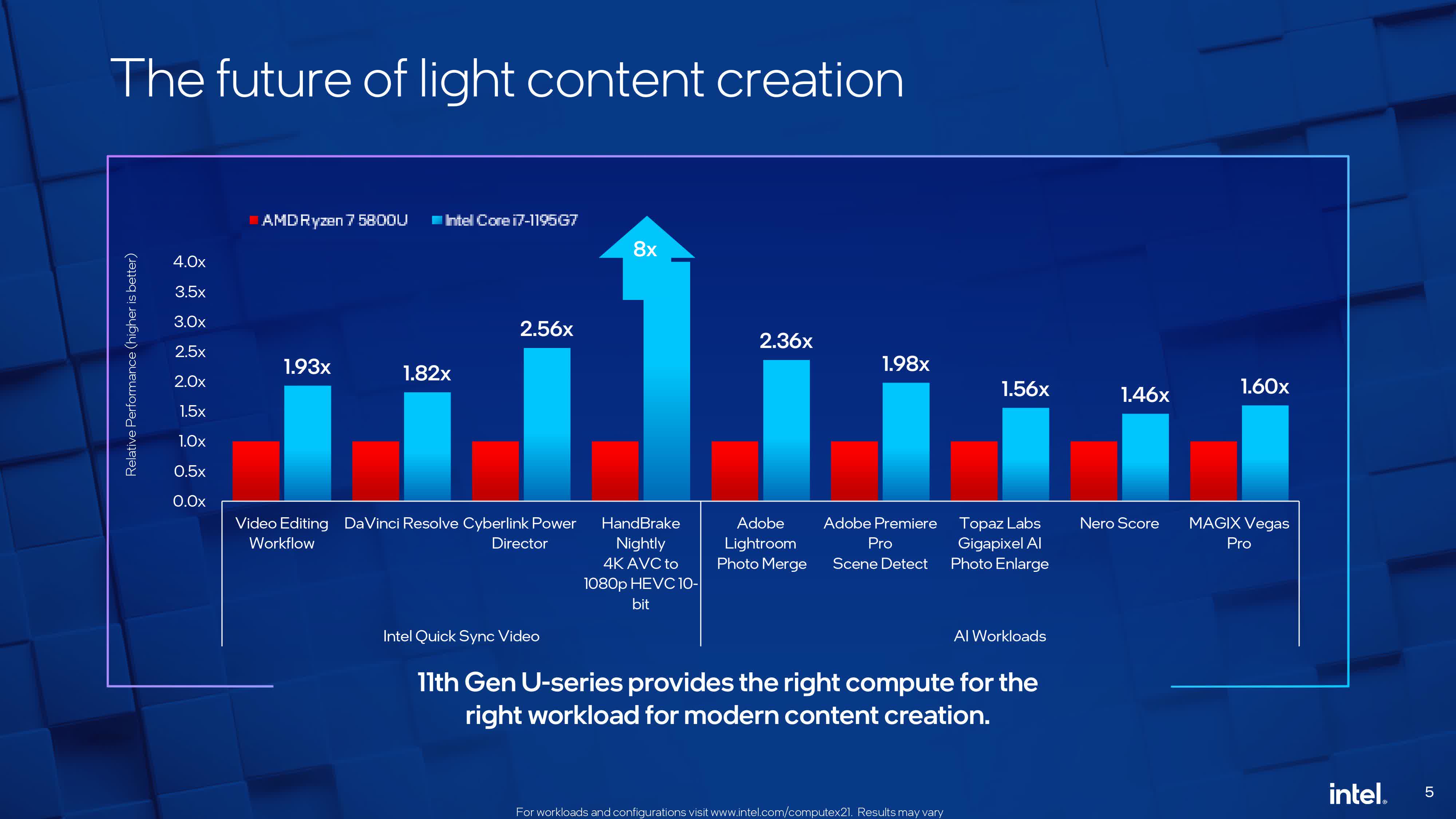In brief: During its Computex 2021 keynote, Intel introduced two new 11th-gen Core mobile parts which are essentially enhanced versions of Tiger Lake processors for ultrabooks we have tested before. Moreover, Intel presented an M.2 5G network module developed in partnership with MediaTek and Fibocom.
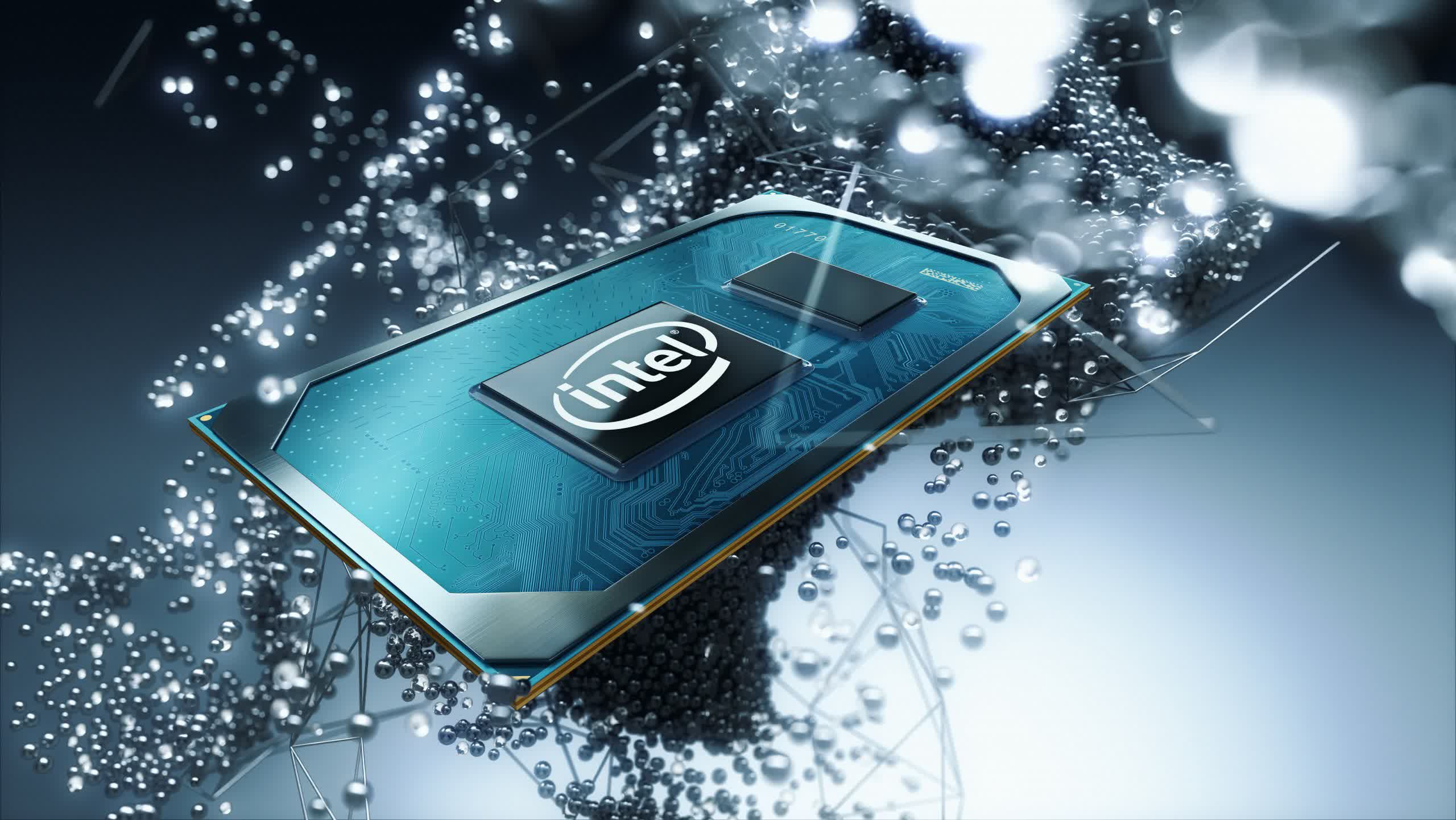
Like the rest of 11th-gen Core mobile SKUs, the new Core i7-1195G7 and i5-1155G7 CPUs are aimed at thin-and-light laptops, offering four cores and eight threads hitting up to 5.0GHz clock speeds with a 12-28W cTDP. Based on Intel's latest 10nm SuperFin process node, these Tiger Lake-U Refresh processors feature Iris Xe graphics and support Wi-Fi 6/6E.
The most powerful of the two, the Core i7-1195G7 has 12 MB of cache and a base clock of 2.9 GHz, boosting up to 5.0 GHz in a single core and 4.6 GHz on all cores. The 96 EUs iGPU has been tuned to peak at 1.40 GHz, making the fastest iGPU in the lineup.
Compared to the i7-1185G7, the new i7-1195G7 comes with a lower base clock, but the CPU and GPU maximum frequencies are slightly higher. These improvements may not offer significant performance gains, but they should be enough to consistently beat the 1185G7 in most workloads. To see how the Core 17-1185G7 performs, you can take a look at our full review.
(click to enlarge)
The Core i5-1155G7 packs 8MB of cache and comes with a base clock of 2.5 GHz, reaching 4.5 GHz single-core and 4.3 GHz all-core as needed. The iGPU features 80 execution units with a maximum turbo frequency of 1.35 GHz.
Intel also shared some slides comparing the gaming and productivity capabilities of the Core i7-1195G7 against the AMD Ryzen 7 5800U APU (read our review).
As per Intel's slides, using the iGPU of the processor, the Intel Core i7-1195G7 beats the Ryzen 5800U by 46% in Fortnite, all the way up to 178% in Valheim.
On productivity workloads using Intel Quick Sync Video, the company claims up to 8x better performance on HandBrake Nightly. On AI workloads, performance improvements range from 46% on Nero Score to 136% on Adobe Lightroom Photo Merge.
Acer, Asus, Lenovo and MSI laptops powered by the two new Tiger Lake processors will be available starting this summer, with more than 60 designs coming out by this holiday season.
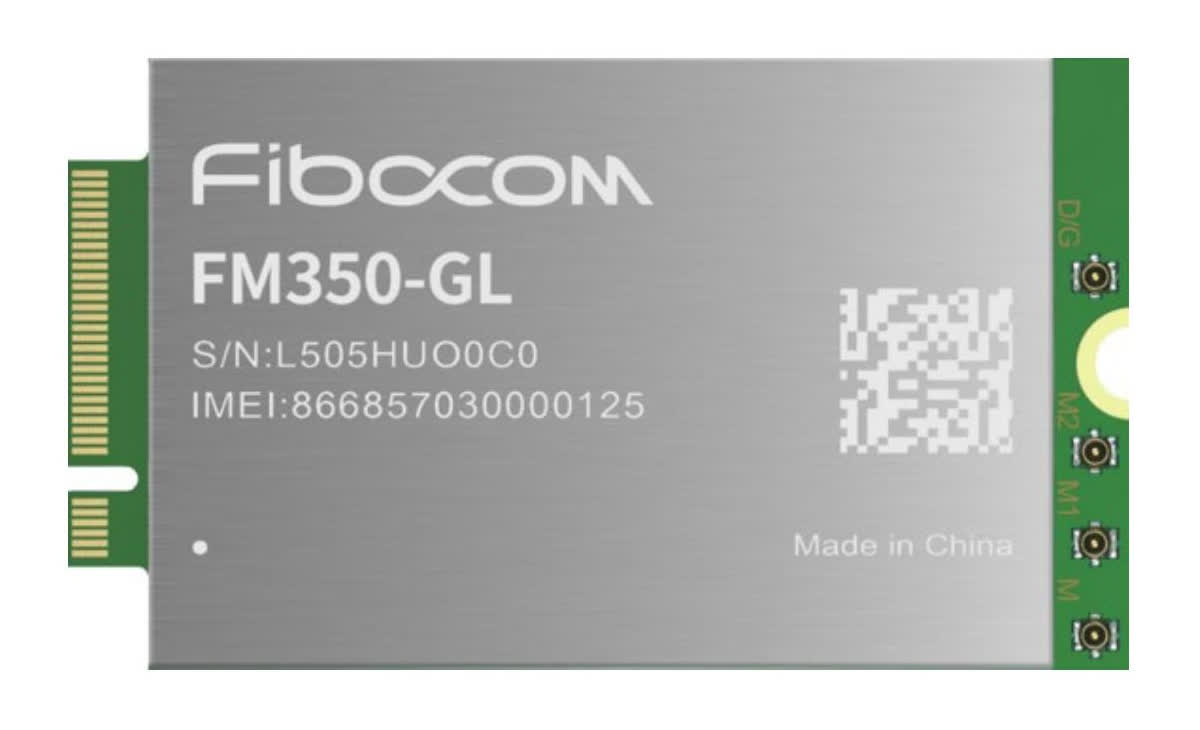
Intel also introduced their 5G Solution 5000, the company's "first 5G M.2 solution with worldwide carrier certification." This network module is the result of a partnership with MediaTek, responsible for product definition, development, certification and support of the 5G modems, and Fibocom, the supplier of the 5G M.2 solutions (FM350-GL).
HP, Asus, and Acer plan to release their first products equipped with the 5G Solution 5000 later this year. In 2022, Intel plans to implement the 5G network module in over 30 more laptops.
Later today, Nvidia will host its Computex 2021's keynote, where we expect to learn more about the RTX 3070 Ti and the RTX 3080 Ti. As for AMD, the company will hold its Computex keynote tomorrow, with a good chance of unveiling the Radeon RX 6000M GPU lineup and the Zen 3 Threadripper HEDT CPUs.
https://www.techspot.com/news/89876-intel-refreshes-11th-gen-core-mobile-lineup-core.html
